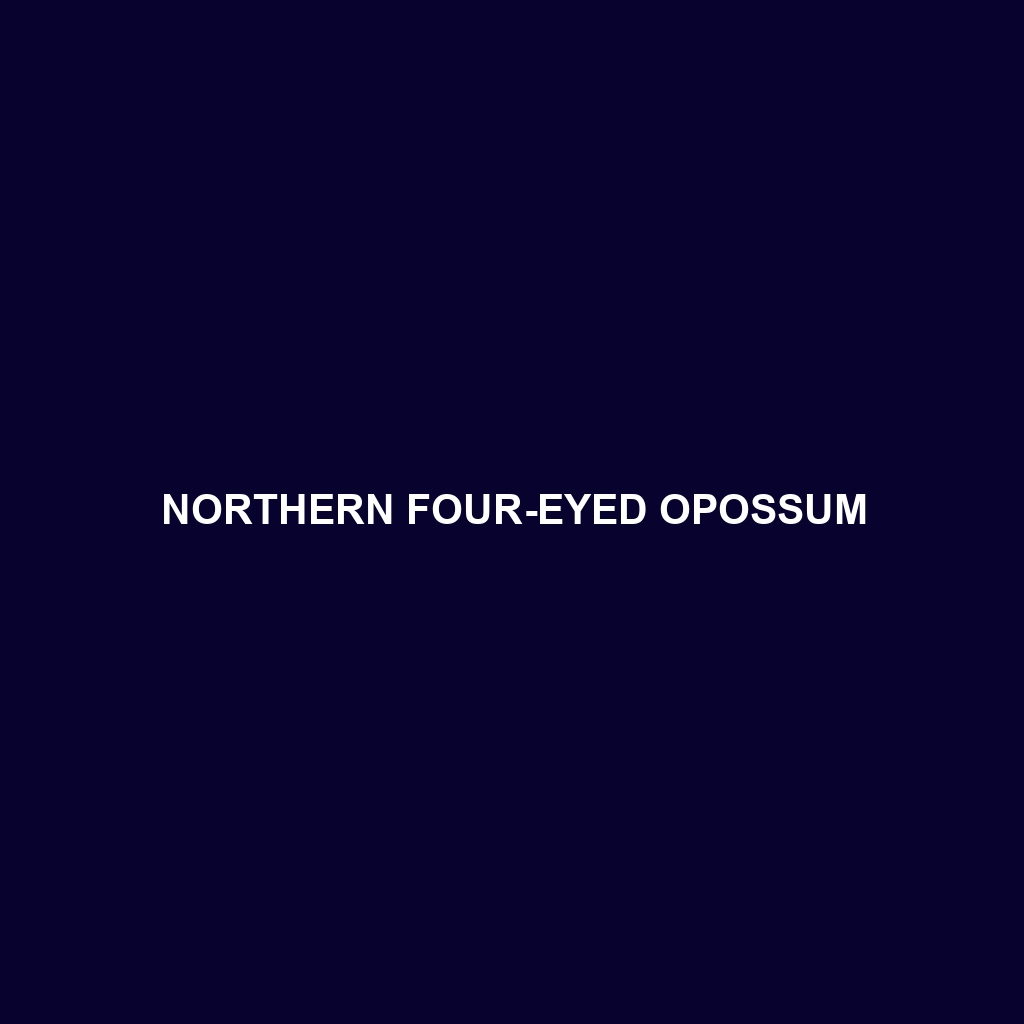Northern Four-eyed Opossum (Philander opossum)
The Northern Four-eyed Opossum is a unique marsupial native to Central and South America. Named for its distinctive facial spots that resemble a second pair of eyes, this nocturnal creature is known for its adaptability and diverse diet. It plays a critical role in its ecosystem, acting as both a predator and prey, while also helping with seed dispersal.
Physical Characteristics:
Size: Typically, adults measure 20 to 30 cm in body length with an additional 30 to 40 cm for their prehensile tail. They generally weigh between 200 to 700 grams.
Coloration: Their fur is predominantly grayish-brown with a lighter underbelly. The most distinctive feature is the white or light-colored spots above each eye, giving them the “four-eyed” appearance.
Special Features: They possess a prehensile tail used for climbing and grasping branches. Their sharp claws and opposable thumbs on their hind feet aid in their arboreal lifestyle. Females have a well-developed pouch for carrying and nurturing their young.
Behavior:
Social Interactions: Northern Four-eyed Opossums are solitary animals except during mating season or when a mother is raising her young. They are generally non-territorial but may become aggressive if threatened.
Feeding Habits: They are omnivorous, with a diet that includes fruits, insects, small vertebrates, and carrion. Their opportunistic feeding habits allow them to adapt to various environments and food availabilities.
Ecological Roles: As both predators and scavengers, they help control insect populations and clean up dead animals. Their role in seed dispersal helps maintain the health of their forest habitats.
Habitats:
They inhabit a variety of environments, including tropical rainforests, dry forests, and even urban areas. They prefer dense vegetation near water sources but are adaptable to different habitats provided there is sufficient food and cover.
Adaptations:
Nocturnal Lifestyle: Their large, sensitive eyes are adapted for low-light conditions, making them effective night-time foragers.
Prehensile Tail: This tail aids in climbing and maintaining balance in the trees, allowing them to navigate their environment efficiently.
Diverse Diet: Their omnivorous diet enables them to thrive in various conditions, reducing competition for food.
Conservation Status:
The Northern Four-eyed Opossum is currently listed as Least Concern by the IUCN Red List, reflecting its broad distribution and adaptability. However, habitat destruction and urban development pose ongoing threats to their populations.
Fun Facts:
Despite their name, they do not actually have four eyes. The spots above their eyes serve as a form of deceptive camouflage against predators.
They are one of the few marsupials found in both Central and South America.
When threatened, they can feign death, a behavior known as thanatosis, to avoid predation.
In conclusion, the Northern Four-eyed Opossum is a fascinating and adaptable animal whose unique characteristics and behaviors make it a significant and interesting species within its ecosystem. Whether navigating the dense forests or making use of urban surroundings, this marsupial continues to thrive, playing vital roles in both natural and human-altered landscapes.
